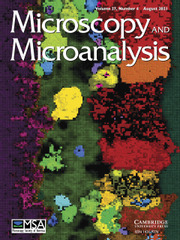Ver ítem
- xmlui.general.dspace_homeCentros e Institutos de InvestigaciónCICVyA. Centro de Investigación en Ciencias Veterinarias y AgronómicasInstituto de BiotecnologíaArtículos científicosxmlui.ArtifactBrowser.ItemViewer.trail
- Inicio
- Centros e Institutos de Investigación
- CICVyA. Centro de Investigación en Ciencias Veterinarias y Agronómicas
- Instituto de Biotecnología
- Artículos científicos
- Ver ítem
The role of glucose in the pathology of EHEC O157: H7
Resumen
The pathogen enterohemorrhagic Escherichia coli (EHEC) O157: H7 is responsible for hemorrhagic
colitis and hemolytic uremic syndrome in humans [1]. During the colonization process in the
gastrointestinal tract, EHEC needs to adapt to changes in nutrient availability [2]. The objective of this
study was to evaluate the influence of glucose on physiology and processes involved in the pathogenesis
of EHEC O157: H7 in order to improve our understanding of
[ver mas...]
The pathogen enterohemorrhagic Escherichia coli (EHEC) O157: H7 is responsible for hemorrhagic
colitis and hemolytic uremic syndrome in humans [1]. During the colonization process in the
gastrointestinal tract, EHEC needs to adapt to changes in nutrient availability [2]. The objective of this
study was to evaluate the influence of glucose on physiology and processes involved in the pathogenesis
of EHEC O157: H7 in order to improve our understanding of the mechanisms controlling EHEC growth
and survival in the bovine gut.
In this study we first analyzed the growth rate of EHEC O157: H7 Rafaela II clade 8, a strain isolated
from a bovine in Argentina, grown in the medium DMEM supplemented with either 4.5% glucose (Highglucose - DHG) or 1% glucose (Low-glucose - DLG). In addition, we assessed the bacterial adhesion
capacity and actin pedestal formation induced by EHEC [3] by performing infection assays. For this
purpose, Caco-2 epithelial cells were exposed for 5 h with Rafaela II grown with the different
concentrations of glucose. Subsequently, the samples were fixed (paraformaldehyde 4%) and
permeabilized (triton); actin and nucleic acids (DNA) were stained with rhodamine-phalloidin and TOPRO-3, respectively. Bacterial adhesion capacity and pedestal formation of cells were evaluated using a
Leica TCS SP5 laser scanning confocal microscope (MC). Each Image was acquired by monitoring a
single focal plane over time (xyt scanning mode) using a 40X/1.25 oil objective lens and 543nm HeNe
and 633 nm HeNe lasers. The frequency and resolution for acquiring images were set at 200 Hz and 1,024
x 1,024 pixels, while maintaining the same settings for laser powers, gain, and offset.
[Cerrar]

Fuente
Microscopy and Microanalysis 26 (Suppl 1) : 181-182 (Abril 2020)
Fecha
2020-04
Editorial
Cambridge University Press
ISSN
1431-9276
Formato
pdf
Tipo de documento
artículo
Palabras Claves
Derechos de acceso
Abierto
 Excepto donde se diga explicitamente, este item se publica bajo la siguiente descripción: Creative Commons Attribution-NonCommercial-ShareAlike 2.5 Unported (CC BY-NC-SA 2.5)
Excepto donde se diga explicitamente, este item se publica bajo la siguiente descripción: Creative Commons Attribution-NonCommercial-ShareAlike 2.5 Unported (CC BY-NC-SA 2.5)


